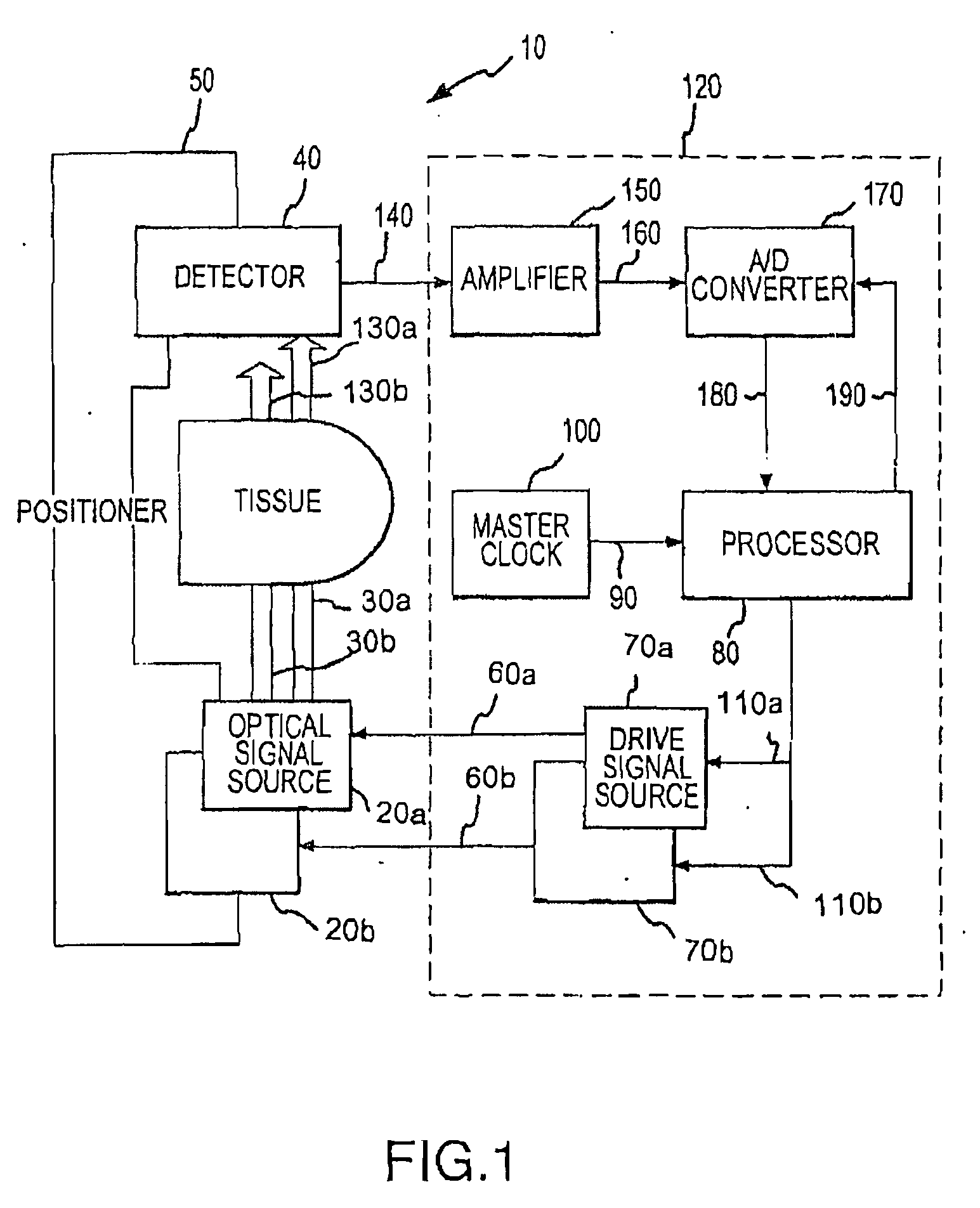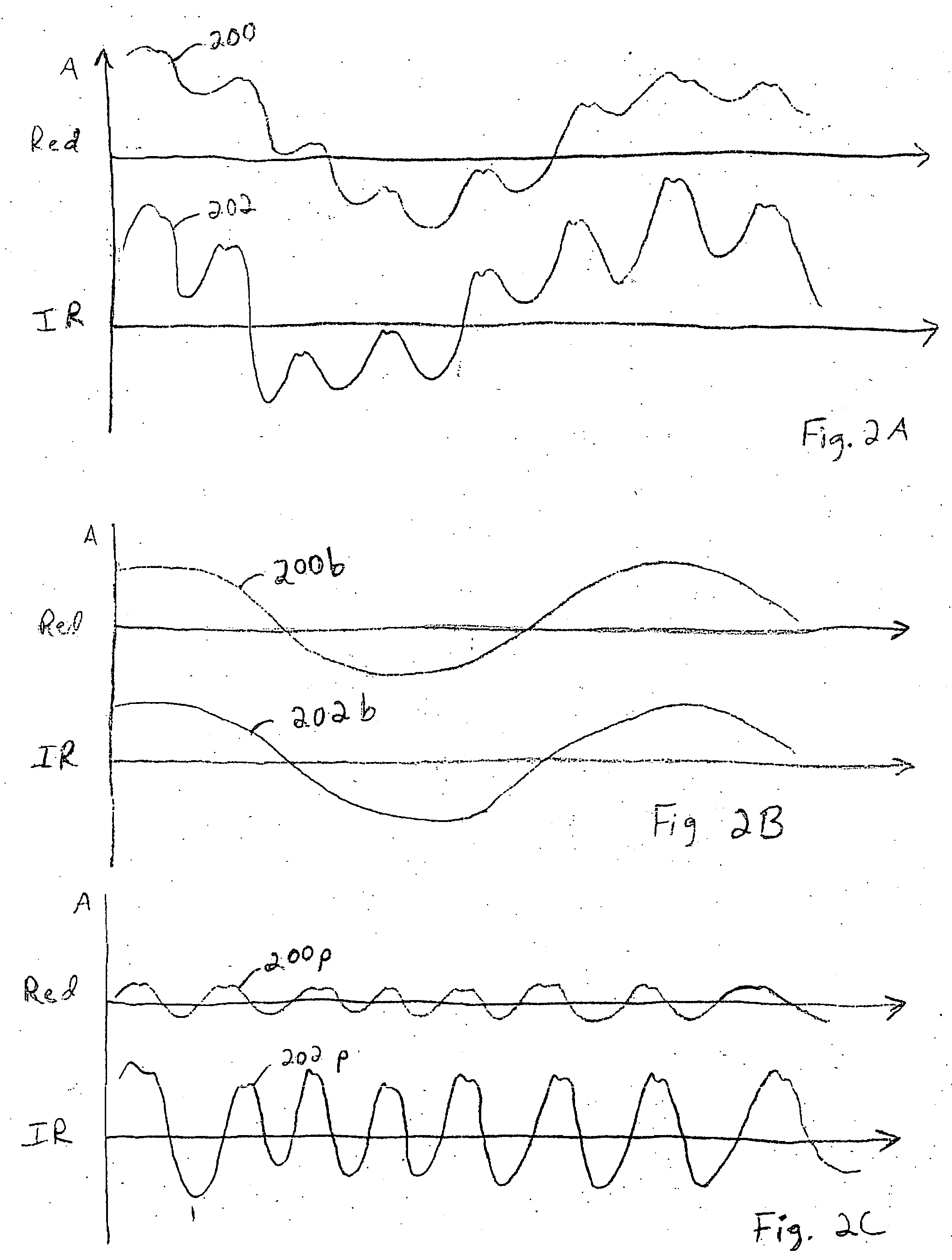Separating oximeter signal components based on color
a signal component and color technology, applied in the field of pulse oximetry, can solve the problems of affecting the accuracy of oximeter signal components, so as to achieve the effect of avoiding or minimizing the loss of useful information and substantially avoiding harmonics of filtered frequencies
- Summary
- Abstract
- Description
- Claims
- Application Information
AI Technical Summary
Benefits of technology
Problems solved by technology
Method used
Image
Examples
Embodiment Construction
[0027] Referring now to FIG. 1, there is shown a block diagram of one embodiment of a pulse oximeter 10 in which a color filter in accordance with the present invention may be implemented. The pulse oximeter 10 is configured for use in determining the pulse rate of a patient as well as one or more blood analyte levels in the patient, such as an SpO2 level. It should be appreciated that a color filter in accordance with the present invention may be implemented in pulse oximeters that are configured differently from the pulse oximeter depicted in FIG. 1 as well as in other environments wherein plethysmographic signals are processed in order to obtain desired information relating to patient physiological conditions from the plethysmographic signals.
[0028] The illustrated pulse oximeter 10 includes a pair of optical signal sources 20a, 20b for emitting a corresponding pair of light signals 30a, 30b centered at different predetermined center wavelengths λ1, λ2 through a suitable tissue ...
PUM
 Login to View More
Login to View More Abstract
Description
Claims
Application Information
 Login to View More
Login to View More - R&D
- Intellectual Property
- Life Sciences
- Materials
- Tech Scout
- Unparalleled Data Quality
- Higher Quality Content
- 60% Fewer Hallucinations
Browse by: Latest US Patents, China's latest patents, Technical Efficacy Thesaurus, Application Domain, Technology Topic, Popular Technical Reports.
© 2025 PatSnap. All rights reserved.Legal|Privacy policy|Modern Slavery Act Transparency Statement|Sitemap|About US| Contact US: help@patsnap.com



